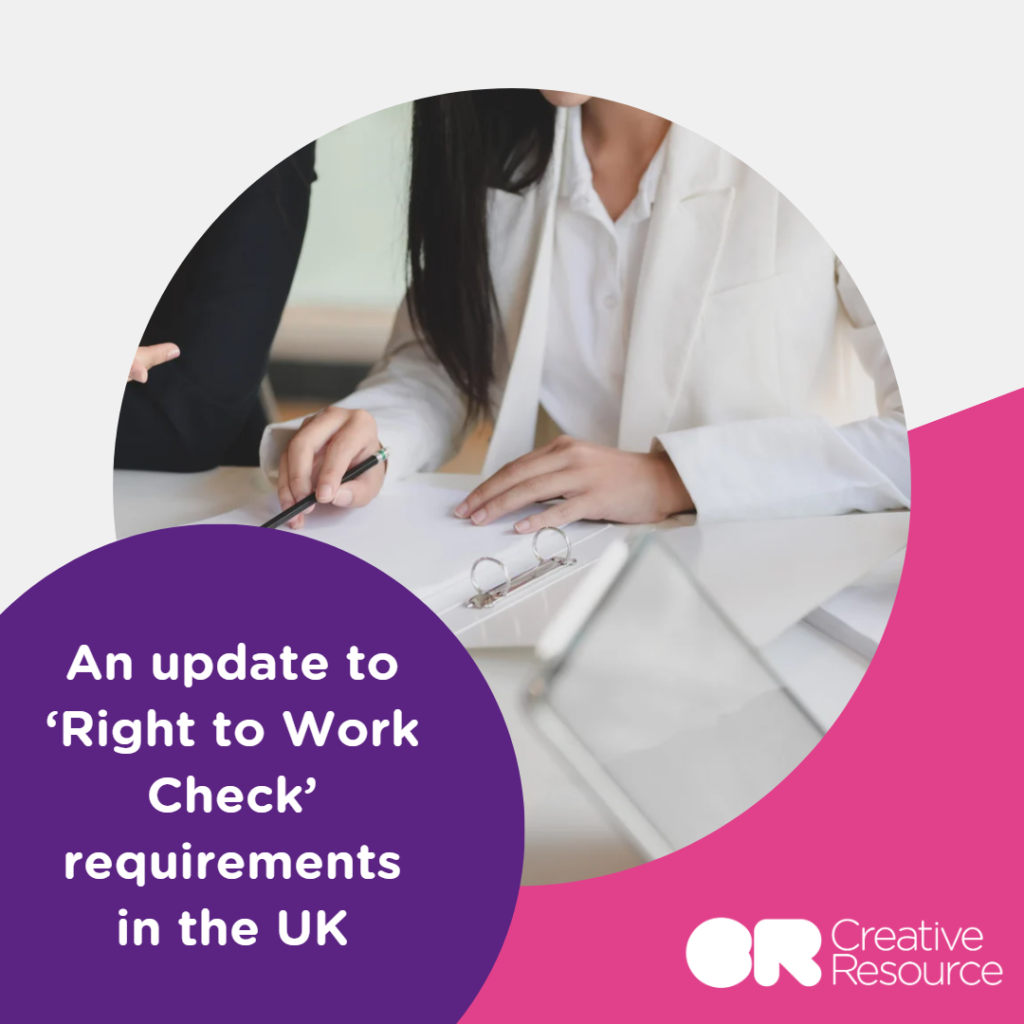Many small businesses find it difficult to keep on top of changes to legislation that impacts how they run their business, particularly if it isnt well-publicised. You might have seen or heard about a change to the rules for Right to Work Checks, but if it’s news to you read on…..
As with most updates to HR and employment law, the information can be really tricky to make sense of, and there is a lot of information to wade through on the gov.uk website.
In the below, we’ve tried to explain what’s happening, and simplify what you need to do now as a result. The most important point to make upfront is that checking an individual’s Right to Work via a video call is no longer a valid way of completing that important check.
What’s the context?
In a neat, quick response to COVID from the Home Office back in March 2020, when people couldn’t be present in an office, it became permissible for right to work checks to be done remotely. On 6th April 2022 this was updated, and as is often the case there was a period granted for employers to get used to the new way of doing things – unfortunately there wasn’t much said about this in the press back in April, and this period of leniency ended on 30th September 2022. So we’re hearing a bit about it now, with some of our clients starting to ask for guidance on how to remain compliant.
Why does this matter to us and our clients?
The £20,000 penalty would be a real sting that we’re sure most businesses would prefer to avoid, and in the absolute worst case, employing people who are not eligible to work in the UK could result in imprisonment.
The legal term for what we’re doing by carrying out these checks is a ‘Statutory Excuse’. This means that should an individual be found in the future to have been working illegally, (and perhaps they showed you good ‘fake’ documents), we’re able to defend ourselves and protect ourselves from potential penalties.
How do we conduct Right to Work Checks from now on?
From 30 September 2022, there are three ways in which you can check an employee’s right to work:
- An in-person manual check using original documents;
- The Home Office’s online checking services; or
- Using and Identification Document Validation Technology (IDVT) identity check.
So what do we have to do now?
Conduct checks on all new starters before they commence employment. We advise that you do this once the contract has been signed and start dates confirmed: it should become the next step on your onboarding process.
How to conduct an in-person right to work check:
- Meet the individual
- Check the document that they have chosen to share with you (a list of the appropriate documents are here, as you’d expect, this includes things like passports)
- Keep a copy – for the duration of their employment, and for 2 years afterwards
There is a useful bit of flexibility here however:
If you can’t meet the individual then a way around this, as referenced on the gov.uk website (section 2, under ‘Checking the validity of documents’) is to ask them to post their original documents to you. You can then hold a video call with them and check the documents while they’re on the call. The key thing here is that they must send the documents to you for checking – you must be in possession of the original documents for it to be a valid check.
Conducting online checks:
The type of check that you need to do depends on the documentation that the prospective employee is able to provide:
For those with a Biometric Residence Card (BRC), a Biometric Residence Permit (BRP) or a Frontier Worker Permit (FWP) we can check a Share Code.
- Ask the employee for their share code and their date of birth
- Put that into the gov.uk Share Code checking service
- Check the details and save a copy of the document that you get at the end of the checking process
For those with a Certificate of Application (COA), or an Application Registration Card (ARC), or those who are not able to produce documentation, (perhaps because they have an outstanding appeal, or they arrived in the UK before 1989 and do not have the documents to prove their immigration status) we use the Employer Checking Service.
- You’ll need to see the original documents in the case of the COA or ARC, and input details from them into the checking service
- If you’re pursuing this route because of a lack of current documentation, you’ll need a Home Office application reference number, or an expired or current passport number and you’ll input that to the checking service
- Follow that through and once complete, print and retain the document that the service provides
Identification Document Validation Technology (IDVT) checks:
Identity Service Providers (IDSPs) are now able to complete the identity verification element of a right to work check for British and Irish citizens – so if you’re not able to see people to complete an in-person check, then this is the route you’ll take. There is a cost involved however, and in some cases that we’ve seen, the process can seem overly arduous, so it’s worth asking the salesperson about the employee/candidate experience.
